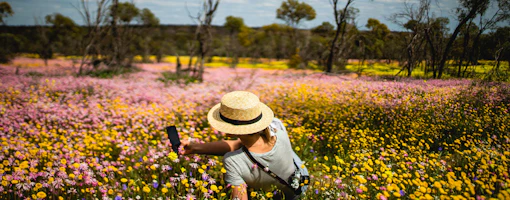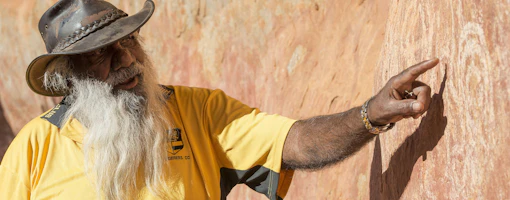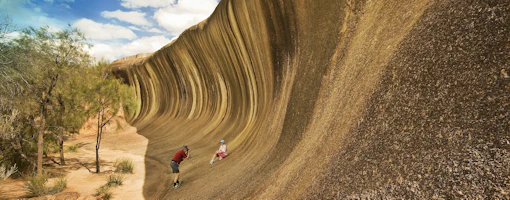
Aboriginal history and culture
The Aboriginal history and culture of Western Australia’s Golden Outback were shaped by the ancient tribes that have inhabited the region for many thousands of years. These include the Wongi people of the Western Desert and the Goldfields, the Yamatji people of the Gascoyne-Murchison region and the Noongar people from the Wheatbelt and Esperance-South Coast.
Unlike other early civilizations around the world, the Aboriginal history and culture of Western Australia’s Golden Outback were not focused on building permanent structures or clearing the earth to cultivate crops. Instead, their spiritual beliefs and way of life were closely bound to the land, sea and sky.
The Dreaming
The Dreaming is the foundation of Indigenous culture and spiritual beliefs. The ancestral Dreaming spirits, who could change their form into animals, people or any physical feature, travelled across the country shaping the natural environment and establishing religious and moral systems for Indigenous Australians. They also created the natural environment and the humans and animal species that populated the land.
When their work was complete, the spirits transformed themselves into hills and other physical features, leaving evidence of their presence in the natural environment, where they still remain a powerful spiritual force for Indigenous Australians.
The Dreaming is not just an integral part of the Aboriginal history and culture of Western Australia’s Golden Outback, it’s also an important source of information for day-to-day survival. Dreaming stories map out the location of water, places to gather food, campsites and significant landscape features, while also linking distant tribes to other Indigenous communities.
Spiritual sites and Aboriginal art
Western Australia’s Golden Outback is rich in fascinating Dreamtime history. At Mulka's Cave, near Hyden, you can learn about the legend of Mulka and marvel at well-preserved examples of Indigenous rock art. Throughout the Gascoyne-Murchison region, Indigenous guided tours explain how the ancient land was shaped by the ancestral Dreaming spirits. And at Mt Augustus, you can see the world’s largest rock, twice as big as Uluru, and Aboriginal rock art believed to be 10,000 to 40,000 years old.
Conservation
Historic Aboriginal sites are valuable resources. Please help preserve these places for future generations. Avoid touching or stepping on the area, leave no rubbish behind and do not mark the site in any way.
Aboriginal art today
Aboriginal art galleries and art centres throughout the region showcase the work of local traditional and contemporary Aboriginal artists. In some places, you can even watch the artists at work.
Authentic Aboriginal tours
You can explore the Aboriginal history and culture of Western Australia’s Golden Outback by joining one of the many authentic Aboriginal tours. See Aboriginal Experiences or visit www.waitoc.com for more details.






























